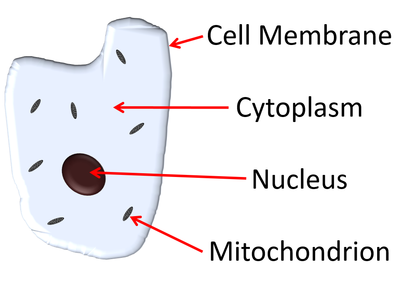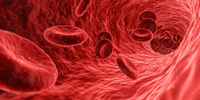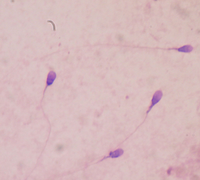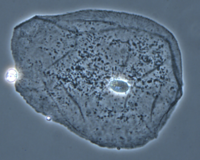Animal Cell
Contents
Key Stage 3
Meaning
An animal cell is a cell that has a cell membrane, cytoplasm, mitochondria and a nucleus.
About Animal Cells
- Animal cells do not have chloroplasts, a cell wall or a permanent vacuole.
| A diagram of a typical animal cell. |
- There are several specialised animal cells found in humans that you should know:
Examples
| Red Blood Cells | Muscle Cells |
| Sperm Cells. | A cheek cell. |
Key Stage 4
Meaning
An animal cell is a eukaryotic cell that has a cell membrane, cytoplasm, mitochondria and a nucleus but no cell wall.
About Animal Cells
- As a eukaryotic cell an animal cell contains membrane bound organelles, including a nucleus and several mitochondria.
- Animal cells can be distinguished from plant cells in that they do not have chloroplasts, a cell wall or a permanent vacuole.
| A diagram of a typical animal cell. |
- There are several specialised animal cells found in humans that you should know:
Examples
| Red Blood Cells | Muscle Cells |
| Sperm Cells. | A cheek cell. |
References
AQA
- Animal cells, page 23, GCSE Combined Science Trilogy; Biology, CGP, AQA'
- Animal cell, pages 22, 34-5, GCSE Biology; Student Book, Collins, AQA'
- Animal cells, page 11, GCSE Biology; The Revision Guide, CGP, AQA'
- Animal cells, page 11, GCSE Combined Science; The Revision Guide, CGP, AQA'
- Animal cells, page 23, GCSE Biology, CGP, AQA'
- Animal cells, pages 6, 10-11, 15, 23, 28, 30-33, GCSE Biology; Third Edition, Oxford University Press, AQA'
- Animals; cells, pages 4-5, 7, 22-3, GCSE Biology, Hodder, AQA'
Edexcel
- Animal cells, page 11, GCSE Combined Science; The Revision Guide, CGP, Edexcel
- Animal cells, page 12, GCSE Biology; The Revision Guide, CGP, Edexcel
- Animal cells, page 23, GCSE Biology, CGP, Edexcel
- Animal cells, pages 4-5, GCSE Biology, Pearson, Edexcel
- Animal cells, pages 4-5, GCSE Combined Science, Pearson Edexcel
Collins
Beyond the Curriculum
Animal Cells Unveiled
While your school curriculum introduces you to the basics of animal cells, there's a fascinating world of cell biology waiting for you beyond the classroom. Let's explore some intriguing facts and concepts about animal cells that go beyond the standard curriculum:
Cellular Signaling: A Symphony of Molecules
Inside animal cells, intricate signaling pathways orchestrate vital processes. For example, the Ras-MAPK pathway regulates cell growth and differentiation. Understanding these molecular symphonies helps scientists develop targeted therapies for diseases like cancer.
Organelle Dynamics: Beyond the Nucleus
Beyond the nucleus and mitochondria, animal cells contain other vital organelles. The endoplasmic reticulum is involved in protein synthesis and lipid metabolism. The Golgi apparatus modifies and packages proteins. Lysosomes are the cell's recycling center, breaking down waste materials. These organelles are essential for cell function.
Cellular Transport: The Invisible Highways
Within animal cells, tiny transport systems move molecules and organelles to their destinations. Motor proteins like kinesins and dyneins walk along microtubules, serving as cellular highways. This fascinating process ensures that essential materials reach their designated spots in the cell.
Cell Differentiation: Building Complexity
Cells within multicellular organisms differentiate to perform specific functions. For example, muscle cells contract, while nerve cells transmit signals. This specialization is orchestrated by genetic regulation, with each cell type expressing a unique set of genes.
Emerging Technologies: Tools of the Future
Cutting-edge techniques like CRISPR-Cas9 gene editing allow scientists to modify genes with precision. Single-cell RNA sequencing reveals the individual gene activity of thousands of cells simultaneously. These technologies hold great promise for understanding diseases and developing innovative treatments.
Unlocking the Secrets of Animal Cells
These facts offer a glimpse into the intricate world of animal cells, where ongoing research continuously reveals new insights. As you progress in your scientific journey, consider exploring these captivating aspects in greater detail.




